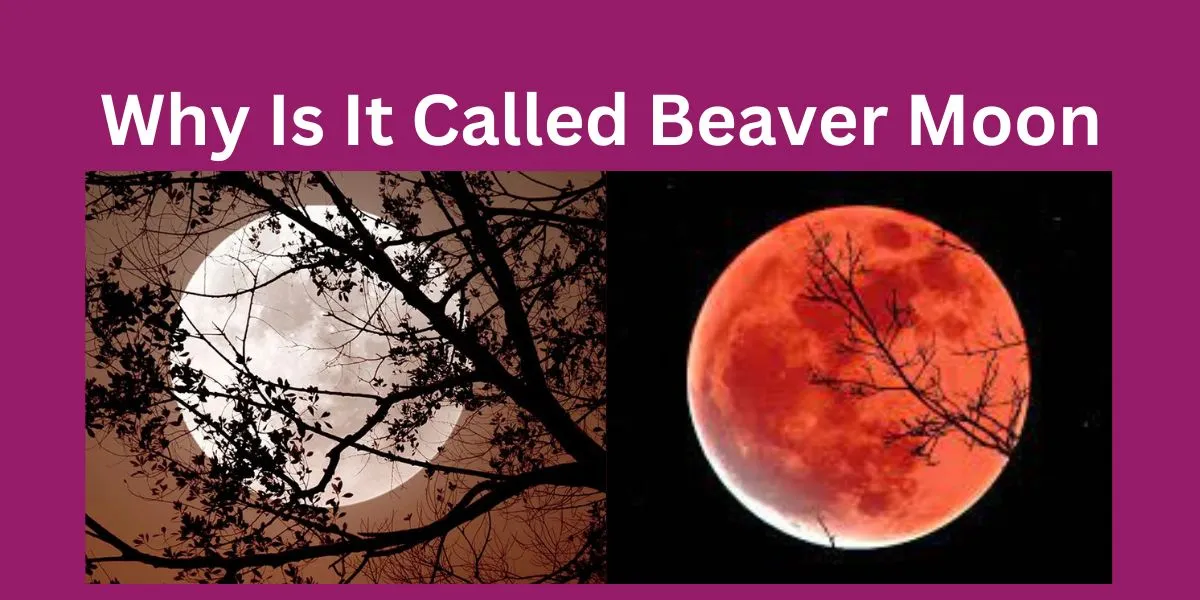Have you ever heard the term Beaver Moon and wondered what it means? No, it’s not a moon shaped like a beaver (though that would be pretty cool). The Beaver Moon is one of the names given to the full moon that occurs in November. This name is steeped in history, culture, and nature, and it’s more interesting than you might think! Let’s dive into why this name exists, its origins, and why it still holds significance today.
What Is the Beaver Moon?
Before we dig into the “why,” let’s clear up what the Beaver Moon actually is. The Beaver Moon is simply the full moon that happens in November. While it’s just one of 12 full moons in a year, its name sets it apart and adds a little magic to the cold autumn nights.
Origins of the Name Beaver Moon
Native American Influence
The term Beaver Moon has roots in Native American traditions. Indigenous peoples often named moons based on the activities or natural events that occurred during that time of year. In November, it was common to see beavers actively preparing for winter by building their dams and lodges. This natural behavior made the full moon in November synonymous with these industrious animals.
Colonial Adoption
When European settlers arrived in North America, they adopted many of the Native American moon names, including Beaver Moon. The settlers found the name fitting because November was also the peak time for trapping beavers. Beaver pelts were in high demand for making warm fur hats and clothing during the cold winters.
Why Beavers?
The Beavers’ Winter Preparations
November is a critical time for beavers. As temperatures drop and ponds begin to freeze, these animals work tirelessly to gather food and reinforce their lodges. They stockpile branches and twigs, which they’ll munch on while hibernating underwater. The November full moon often illuminated their nocturnal activities, earning the name Beaver Moon.
Importance of Beavers in History
Beavers were once a cornerstone of survival and trade. Native Americans and early settlers relied on beaver pelts for warmth and trade goods. In a way, this moon not only symbolizes the beavers themselves but also the deep connection between humans and nature during a time when survival depended on it.
Astronomical Significance of the Beaver Moon
While the name has earthy origins, the Beaver Moon also holds celestial importance. It’s one of the final full moons before the winter solstice and often signals shorter days and colder nights. The moon appears particularly bright and large in the crisp November sky, adding to its allure.
Other Names for the November Full Moon
The Beaver Moon isn’t the only name for this time of year’s full moon. Depending on culture and region, it’s also known as:
- Frost Moon: Named for the frosty weather that arrives in November.
- Snow Moon: A nod to the first snowfalls in some areas.
- Mourning Moon: Linked to certain Pagan traditions symbolizing reflection and letting go.
Modern Relevance of the Beaver Moon
Connecting to Nature
Even in today’s fast-paced, tech-driven world, the Beaver Moon reminds us to look up and reconnect with nature. It’s a moment to pause and appreciate the rhythms of the natural world, just as our ancestors did.
A Time for Preparation
The Beaver Moon’s themes of preparation and resourcefulness are timeless. Just like beavers ready themselves for winter, we can use this time to prepare for the colder months ahead—whether that means swapping out your summer wardrobe, stocking up on winter essentials, or just getting cozy with some hot cocoa.
Celebrating the Beaver Moon
Moon-Watching Traditions
Who doesn’t love a good excuse to gaze at the moon? Many people celebrate the Beaver Moon by hosting moon-watching parties or simply stepping outside for a quiet moment under the night sky.
Rituals and Reflections
Some cultures use the Beaver Moon as a time for reflection and gratitude. Journaling, meditating, or setting intentions for the winter months are popular ways to honor this lunar event.
Fun Facts About the Beaver Moon
- It’s Always in November: The exact date changes yearly, but it always falls in November.
- Supermoon or Regular Moon?: Occasionally, the Beaver Moon coincides with a supermoon, making it appear even larger and brighter.
- A Global Phenomenon: While the name Beaver Moon is specific to North America, people all over the world enjoy this November full moon.
How to Enjoy the Beaver Moon
Stargazing Tips
Want the best view of the Beaver Moon? Here are a few tips:
- Find a Dark Spot: Head away from city lights for the clearest view.
- Check the Weather: Cloudy skies can ruin the experience.
- Bring Binoculars: They can enhance your view of the moon’s craters and surface.
Capture the Moment
Love photography? The Beaver Moon is a great time to practice your nighttime photography skills. Use a tripod and experiment with different settings to capture its glow.
The Spiritual Side of the Beaver Moon
For some, the Beaver Moon holds spiritual meaning. It’s considered a time for:
- Letting go of the past.
- Embracing change.
- Preparing for new beginnings, much like the beavers preparing their lodges.
Beaver Moon and Astrology
Astrologers often associate the Beaver Moon with transformation and introspection. It’s a chance to align your goals and energies before the year ends. Whether or not you believe in astrology, the moon’s symbolism can serve as a gentle reminder to reflect and plan.
Do Animals Behave Differently During the Beaver Moon?
Interestingly, the bright light of the full moon can influence nocturnal animals. Beavers might be more active under its glow, and other creatures like owls and foxes may also adjust their behaviors. It’s nature’s spotlight, and everyone wants their turn!
Why We Still Use Moon Names
Why do we keep calling it the Beaver Moon in 2024? Because names like these add a layer of wonder to our everyday lives. They connect us to the past, to nature, and to each other. Plus, they’re just plain fun to say!
Conclusion
The Beaver Moon is more than just a celestial event; it’s a piece of history, a nod to nature, and a moment to reflect. Its name may sound quirky at first, but once you uncover its roots, it makes perfect sense. So next November, when you spot the glowing full moon, remember the busy beavers, the early settlers, and the timeless cycle of nature that brings us all together.
FAQs
1. When does the Beaver Moon occur?
The Beaver Moon always happens in November. The specific date varies each year, based on the lunar cycle.
2. Is the Beaver Moon the same as a supermoon?
Not always. Sometimes the Beaver Moon coincides with a supermoon, but it’s not a guarantee.
3. Can you see the Beaver Moon everywhere?
Yes, the Beaver Moon is visible worldwide, though the name is specific to North America.
4. Why are moon names important?
Moon names like Beaver Moon connect us to nature, history, and cultural traditions.
5. What are some other November moon names?
Other names include the Frost Moon, Snow Moon, and Mourning Moon, depending on cultural context.










